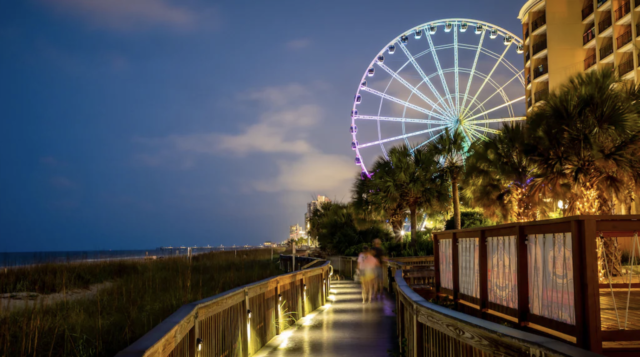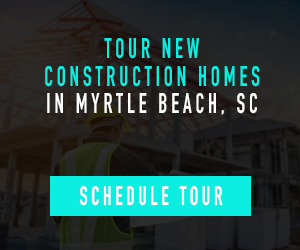Selecting the ideal neighborhood to settle down in is a pivotal decision that can profoundly impact your day-to-day life. Myrtle Beach, South Carolina, a dynamic coastal city renowned for its picturesque beaches, thriving cultural scene, and vibrant tourism industry, offers a plethora of neighborhoods to consider. From serene beachfront communities to bustling urban enclaves, each neighborhood boasts its own distinct charm, amenities, and lifestyle options. In this comprehensive guide, we’ll delve into the top neighborhoods worth exploring in Myrtle Beach, shedding light on their unique characteristics to assist you in making an informed decision as you embark on your home buying journey.
Best Neighborhoods in Myrtle Beach:
- The Market Common:
Situated in the heart of Myrtle Beach, The Market Common stands out as a meticulously planned community seamlessly blending residential living with retail, dining, and entertainment options. With its picturesque streets, upscale homes, and pedestrian-friendly environment, this neighborhood offers a modern and vibrant lifestyle. Residents benefit from access to parks, walking trails, and recreational facilities, along with proximity to shopping centers, eateries, and cultural attractions. - Grande Dunes:
Nestled along the scenic Intracoastal Waterway, Grande Dunes epitomizes luxury and exclusivity, making it one of Myrtle Beach’s most coveted communities. Boasting opulent waterfront residences, championship golf courses, and premier amenities such as a private beach club and marina, Grande Dunes exudes sophistication and elegance. With its gated entrances, lush landscapes, and round-the-clock security, this neighborhood offers residents unparalleled privacy, tranquility, and resort-style living. - Carolina Forest:
Located just inland from Myrtle Beach, Carolina Forest emerges as a sprawling suburban oasis renowned for its family-friendly ambiance and top-notch schools. Featuring a diverse array of housing options, including single-family homes, townhouses, and condominiums, this neighborhood caters to a wide range of lifestyles and budgets. Residents enjoy access to community parks, recreational facilities, and shopping destinations, along with convenient proximity to major highways and employment centers. - Surfside Beach:
Affectionately known as the “Family Beach,” Surfside Beach exudes laid-back coastal charm and boasts a pristine shoreline ideal for swimming, surfing, and sunbathing. Offering an eclectic mix of beachfront cottages, bungalows, and condos, this neighborhood provides residents with a relaxed coastal lifestyle. With its vibrant local dining scene, boutique shops, and community events, Surfside Beach embodies the quintessential beach town experience. - Murrells Inlet:
Positioned just south of Myrtle Beach, Murrells Inlet captivates with its idyllic fishing village atmosphere and abundant natural beauty. Featuring waterfront homes, marshfront estates, and golf course communities, this neighborhood offers a serene and scenic backdrop with ample recreational opportunities. Residents can explore nature trails, indulge in boating and fishing excursions, and savor delectable seafood cuisine at local eateries along the MarshWalk. Read more about living in Murrells Inlet.
Challenging Neighborhoods in Myrtle Beach:
- Socastee:
Situated to the west of Myrtle Beach, Socastee presents a suburban landscape characterized by rapid development in recent years. While Socastee offers affordable housing options and convenient access to major thoroughfares, it also grapples with traffic congestion, limited amenities, and susceptibility to flooding. Prospective residents should carefully assess the area’s flood risk and infrastructure challenges before considering a move to Socastee. - Forestbrook:
Located inland from Myrtle Beach, Forestbrook offers a suburban lifestyle with a mix of residential developments and commercial establishments. While this neighborhood boasts relatively affordable housing options and proximity to schools and shopping centers, it experiences moderate traffic congestion and lacks significant recreational amenities. Homebuyers seeking a tranquil suburban environment may find Forestbrook appealing, despite its drawbacks. - Conway:
Positioned northeast of Myrtle Beach, Conway is a historic town brimming with southern charm and character. While Conway offers a quaint downtown area, historic homes, and cultural attractions, it also faces challenges such as limited housing inventory, longer commute times to Myrtle Beach, and fewer amenities compared to other neighborhoods. Homebuyers interested in Conway should weigh the trade-offs between its small-town charm and proximity to urban amenities.
Selecting the right neighborhood in Myrtle Beach requires careful consideration of various factors, including lifestyle preferences, budget, and housing needs. Whether you’re drawn to the upscale amenities of Grande Dunes, the family-friendly ambiance of Carolina Forest, or the laid-back coastal charm of Surfside Beach, Myrtle Beach offers a diverse range of neighborhoods to suit every taste and lifestyle. By conducting thorough research, consulting with local real estate professionals, and visiting potential neighborhoods in person, prospective homebuyers can find their ideal place to call home in this vibrant coastal community.









